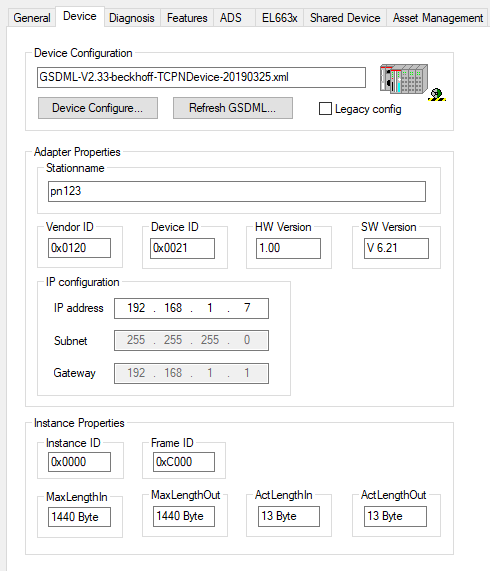Project planning of the PROFINET device
When establishing a PROFINET connection the controller always assigns an IP address to the device from its own address space (if the device does not yet have one or if it has a different one). In TwinCAT the next higher address is taken for a device by default (starting from the controller adaptor class); the subnet and gateway are the same as those of the controller. Before the actual assignment of the IP address to the device by the controller, an ARP is used to test for a possible address conflict or to check whether the device already has this IP address. If there is a conflict, e.g. that the IP address is already assigned in the network, the IO driver determines this and outputs a corresponding message in the logger window. If there is no reply to the ARP, this means that no device (the projected device included) is using this IP configuration, which in turn results in the controller assigning the IP settings to the device via a DCP_SET. Setting is skipped if it is determined via the ARP that the device sought already has the projected IP address. If the IP addresses of the PROFINET device and the operating system are identical, this can lead to unexpected behavior such as errors in the structure of the AR.

In this window you can also change the InstanceID and the FrameID. However, the default settings are adequate for most applications. The Instance ID is incorporated into the formation of the UUID object. A change should therefore be made only in exceptional cases. When changing the FrameID, the RTClass used must be taken into account (e.g. for RTClass1 unicast0xC000 - 0xFAFF). If the device is on an IRT controller and all devices have been switched automatically to RTClass3, the FrameID is managed automatically and there is no input option (marked by "Fast Config"). The current process data length can also be checked in this menu. MaxLength indicates which process data size is supported by the corresponding device, ActLength indicates the current process data length (including IOPS and IOCS). The corresponding error message appears if the maximum lengths are exceeded on appending further modules/submodules.